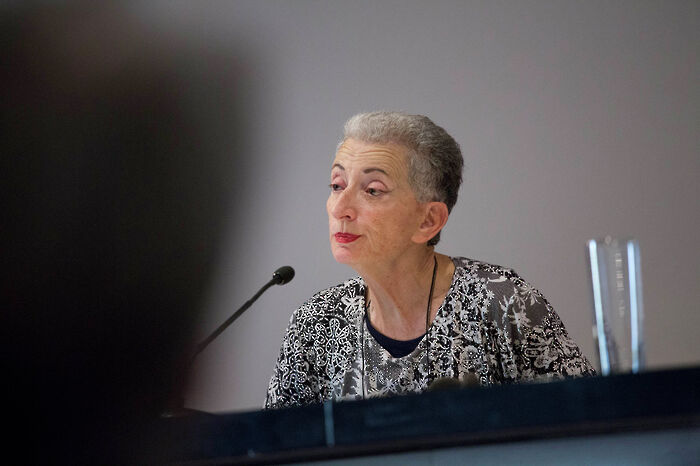Reclaiming sonnets for the female gaze
We must reappraise our gendered view of sonnet writing, argues Cecily Fasham
Sonnets have a reputational problem. I can understand why. When we’re taught about sonnets, through Shakespeare, Petrarch, and the poetry of Elizabethan courtiers, we encounter the form as a neat box encapsulating a heterosexual, misogynistic view of love, in which a male poet-speaker looks on a beautiful woman and laments his love for her, transforming her – sonnet by sonnet, in sequences like those by Sidney or Spenser – from a person into an image, a hunted doe or goddess, a passively beautiful figure reduced to an object by the power of the male gaze. Somewhere along the way we came to believe this was how sonnets ‘traditionally’ work. But this is a shamefully limited view of the sonnet. There’s a whole other world out there, one with female sonneteers at the helm. While I can’t give you a full history of the alternative feminine sonnet tradition – the research just doesn’t exist – I’d like to take you through a few prominent female sonnet-writers, to give you a glimpse of the perspectives our narrow view of sonnets ignores.
There’s a whole other world out there, one with female sonneteers at the helm.
The first sonnet sequence written in English was not a courtly love-poem written by a nobleman. In 1560, an anonymous sonnet sequence, Meditations of a Penitent Sinner, appeared, printed as a preface to John Calvin’s sermons. This was the first English sonnet sequence. It was written by Anne Locke, a protestant poet and translator who had just returned to England after fleeing to Europe as a Marian exile without the permission of her husband. The Meditations are about as far from a creepy Petrarchan sonnet sequence as you can get. Locke’s are devotional sonnets – the lovers are God and the Christian believer. This is a tradition that continues and gets picked up by famous sonneteers like Donne in his Holy Sonnets (1633), and later was championed by Victorian women like Elizabeth Barrett Browning and Christina Rossetti.
Our gendered view of the sonnet does injustice to female sonneteers, and no example of this is better than Elizabeth Barrett Browning. Her Sonnets from the Portuguese (1850), love poems she wrote to her future husband, Robert Browning, are usually read in the paradigm of the male sonnet. Barrett Browning is seen as ‘taking on the masculine role’. Because we’re looking for the Petrarchan elements in the sonnets, their deep devotional sense – which is key to the way they work – is missed. Writing a sonnet doesn’t mean that a poet must subscribe to the selfish love of the masculine sonnet.
Christina Rossetti, following upon Barrett Browning, writes sonnets that problematise the self-centred potential of heterosexual romance. In her sonnet, ‘In An Artist’s Studio’ (1856), which is about a male artist’s female muse, she presents the man as a vampire who ‘feeds upon her face by day and night’, creating portraits of the woman ‘not as she is, but as she fills his dream’ – false representations, based on foregrounding himself and his imagination, while edging out his lover, who remains ‘hidden just behind those screens’, not allowed into the frame on her own terms.
Writing a sonnet doesn’t mean that a poet must subscribe to the selfish love of the masculine sonnet.
Moving to the 20th century, in 1989, Bernadette Mayer’s Sonnets came out. Their effect on contemporary poetry was electric. Mayer’s Sonnets are the reason I came back to the sonnet. I’d given up on it at school because it seemed so formulaic and boring. Since discovering Mayer last year, I’ve written over forty sonnets. Mayer’s sonnets reference the ‘great’ sonneteers – bits of Shakespeare, Petrarch and Dante find their way into Mayer’s poems, but in ways that are witty and irreverent. She stitches together slang and high poetry: in one sonnet, Wyatt’s translation of Petrarch appears as a breakup-rebound: ‘I’m so mad at you I’m sure I’ll take it all back tomorrow/& say then they flee from me who sometime did me seek.’
Mayer’s sonnets celebrate love beyond idealised heterosexual romance. All of life is in these sonnets (one pair is titled, ‘Sonnets: the Landlord was Thrown Out of the Rent Destabilisation Group’). Non-lovers, including female friends, are addressed. Mayer’s sonnets ‘for Grace’, about bringing up children together, are edged with beautiful, deeply-felt platonic love: one, ‘Incident reports sonnet #5’, ends with the exquisite couplet, ‘Then we got into our tiny bed together/with our shared immortal fear of love.’
Of the poets following Mayer, one of the more exciting is Laynie Browne. Browne’s 2007 Daily Sonnets present a radical opening-up of the sonnet-form, to new voices and kinds of love. Browne’s sonnets are a tissue of overheard language and direct quotation from her children. Her sonnets find things to love in the tiring grind of day-to-day life, irresistibly sublime and absurd by turns. I’ll end with one of Browne’s couplets that exemplifies this, a couplet I tacked to my wardrobe door as ‘décor’: ‘Can you pickle anything? How about a building?’
 News / Cambridge academics stand out in King’s 2026 Honours List2 January 2026
News / Cambridge academics stand out in King’s 2026 Honours List2 January 2026 Interviews / You don’t need to peak at Cambridge, says Robin Harding31 December 2025
Interviews / You don’t need to peak at Cambridge, says Robin Harding31 December 2025 Comment / What happened to men at Cambridge?31 December 2025
Comment / What happened to men at Cambridge?31 December 2025 News / Varsity’s biggest stories of 202531 December 2025
News / Varsity’s biggest stories of 202531 December 2025 Features / “It’s a momentary expression of rage”: reforming democracy from Cambridge4 January 2026
Features / “It’s a momentary expression of rage”: reforming democracy from Cambridge4 January 2026










